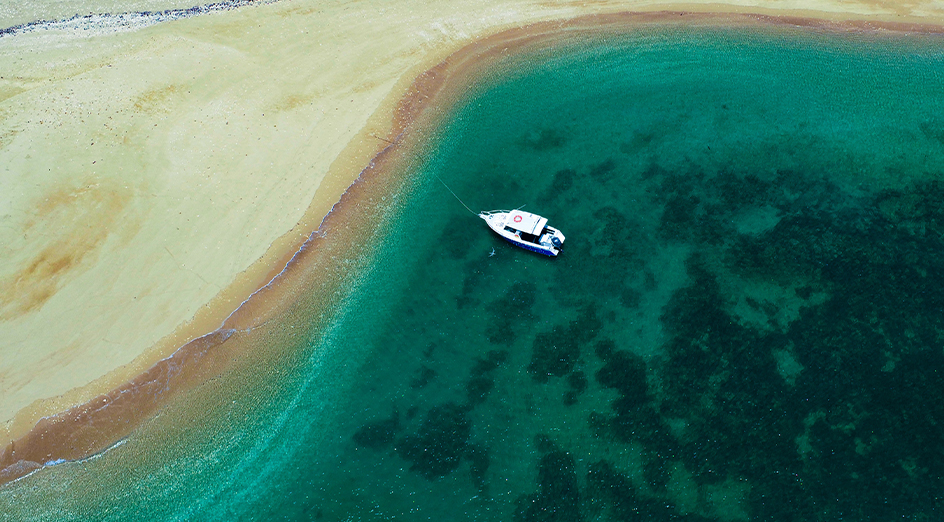New research from The University of Western Australia’s Oceans Institute and ARC Centre of Excellence for Coral Reef Studies has examined the building blocks of a reef island off the coast of WA’s Pilbara region to better predict its resilience to climate change.
UWA PhD student and lead author Josh Bonesso investigated the link between the living reef ecology, the sediment it generated to build the landforms, and how climate change could impact how the islands formed in the future.
“Reef-island seascapes are an artefact of the inherent life and death cycle of reef organisms,” Mr Bonesso said.
“It is by understanding the connection through space and time, that we may better safeguard their future.
“Coral reef islands, such as the Pilbara inshore islands, are a critical stronghold for many endemic and vulnerable species including sea turtles, shore bird, and sea bird populations.”
 Image: Tropical clear-water off Eva Island.
Image: Tropical clear-water off Eva Island.
Tropical clear-water coral reef systems can trend towards more turbid-water environments when impacted by climate change; such as rising sea surface temperature, ocean acidification, and decreasing water quality conditions.
“We investigated, for the first time, the link between the ecology and sediment dynamics of a naturally turbid reef-island system, Eva Island, in the eastern Indian Ocean,” Mr Bonesso said.
Around the world most reef islands are built by one primary organism, such as coral or foraminifera (a single-celled organism).
“Our study found reef and island sediments were very high in two component organisms: molluscs and coral,” he said.
“However, surveys showed there to be very low numbers of living molluscs left on the reef which could have been caused by several factors including acute disturbance events – marine heat waves, the life cycle of molluscs, transport of mollusc-rich sediments from northern WA, or high retention of mollusc material in the local sediments at Eva Island.”
Research group lead scientist Dr Mick O’Leary, from UWA’s School of Earth Sciences, said understanding contemporary sediment dynamics was important for interpreting island resilience to environmental change.
“Understanding the rate of reef sediment production and supply will be a critical factor in predicting the future trajectory of reef-islands under the double whammy of warming oceans and rising seas,” Dr O’Leary said.
The study found reef Islands with more diverse sediment components, like Eva Island, were more likely to exhibit greater potential for resilience - but molluscs and coral were very sensitive to climate change so any decline could result in slow island building.
Media references
Josh Bonesso (PhD Student, lead author, Coral Reef Geoscience) 0414 740 081
Annelies Gartner (UWA Media Advisor) 08 6488 6876
